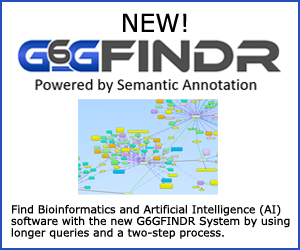LitInspector
Category Cross-Omics>Data/Text Mining Systems/Tools
Abstract LitInspector is Genomatix' literature search tool for automatic gene and signal transduction pathway data mining within the complete NCBI's PubMed database containing more than 17 million publications.
Software guided gene recognition and color coding increases the readability of abstracts.
This way LitInspector can significantly speed up literature searches for the scientist. At the same time, the scientist retains full control over the software processed data as the sentences and the complete abstracts remain available.
LitInspector allows input of gene synonyms or gene IDs and free text. At least one gene synonym or free text word or phrase must be submitted. The query can also be filtered for only those abstracts for which defined keyword categories (tissue, disease, or pathway) were identified.
Products features/capabilities include:
Gene recognition -- The gene recognition in LitInspector is based on the comprehensive gene synonym lists provided by NCBI's Entrez Gene. These synonym lists are complemented by Genomatix' own synonym databases which were assembled over prior years, containing additional synonyms as well as deprecated synonyms which resulted in predominantly wrong tagging.
Example: the synonym "CO2" for "complement component 2" (gene ID: 717) was deprecated because it is mainly used with the meaning "carbon dioxide" in the literature.
Homonyms and ambiguous synonyms -- One of the main challenges of automatic gene data mining is the disambiguation process especially of short gene synonyms.
To address this process LitInspector uses a combination of automatic disambiguation modules, context databases manually curated by Genomatix and half-automatically generated and manually edited filtering lists.
Disambiguation of gene homonyms makes use of the occurrence of further gene synonyms in the same abstract as well as automatically and manually generated context lists.
Assignment of organism information -- LitInspector makes use of the organism information annotated by the MeSH consortium provided within the MeSH terms. However, for the most recent abstracts the MeSH annotation is Not yet completed and in other publications an organism information is generally Not available.
For some publications, it is hard to identify organism information even if the complete paper is scanned. To make sure that No publications are skipped because there is No organism annotated, LitInspector uses only 'soft criteria' for the organism assignment.
Tissue and disease tagging -- The tissue and disease tagging is based on Genomatix' proprietary synonym catalogs. The tissue catalog contains over 3,000 entries and the disease catalog contains over 11,000 entries.
Signal transduction pathway mining -- The LitInspector 'signal transduction pathway mining' is based on Genomatix' proprietary and manually curated database of pathway components.
Currently, the database consists of over 392 signaling pathways and over 100 pathway keywords. For most of the signaling pathways, canonical pathways from BioCarta, STKE, or KEGG, are assigned and hyperlinked.
Note: The graphics provide an overview and they may Not necessarily contain the query genes.
For pathway mining the PubMed database is scanned for co-occurrence of the user input gene and the Genomatix pathway components and keywords at sentence level.
The output table is sorted by the number of references found, since a higher number of references are assumed to provide higher evidence. In addition, the user has full access to the references to verify the software predicted data by clicking the link to NCBI's PubMed. An identified association of the query gene to a pathway can have several possible meanings:
1) The query gene may be part of the signaling pathway;
2) It may regulate the pathway;
3) It may be regulated by the pathway;
4) It may regulate a different pathway which in turn cross talks with the mentioned pathway;
5) It is also possible that the query gene was experimentally found to Not be associated with that pathway.
LitInspector pathway mining provides an actual overview of possible pathway associations and potential interactions of the query gene. It also provides the literature references which allow direct verification by the scientist.
Note: See Genomatix Pathway System (GePS) - (G6G Abstract Number 20019R) for additional product info from this manufacturer.
System Requirements
Contact manufacturer.
Manufacturer
- Genomatix Software GmbH
- Bayerstr. 85a
- 80335 München
- Germany
- Phone: +49-89-599-766-0
- Fax: +49-89-599-766-55
- email: info@genomatix.de
- sales: sales@genomatix.de
Manufacturer Web Site LitInspector
Price Contact manufacturer.
G6G Abstract Number 20228
G6G Manufacturer Number 101114







